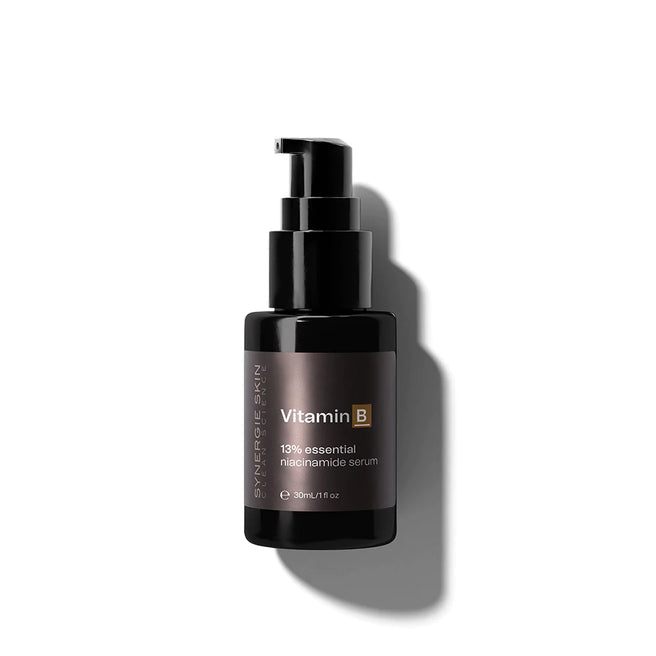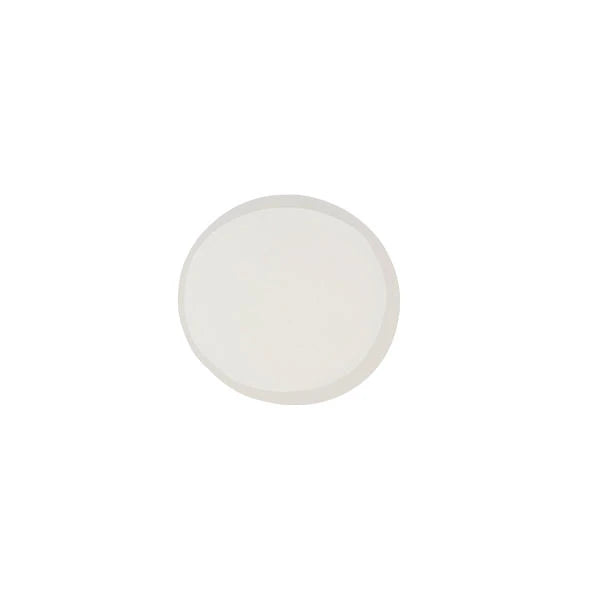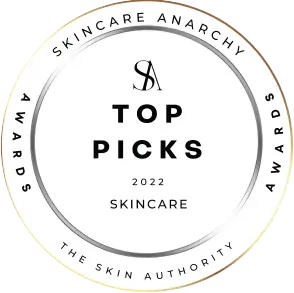Could red light therapy be a holistic approach to wellness, encompassing both physical and mental spheres? Skin scientist Terri Jones explores this fascinating, complex, and rapidly developing health treatment.
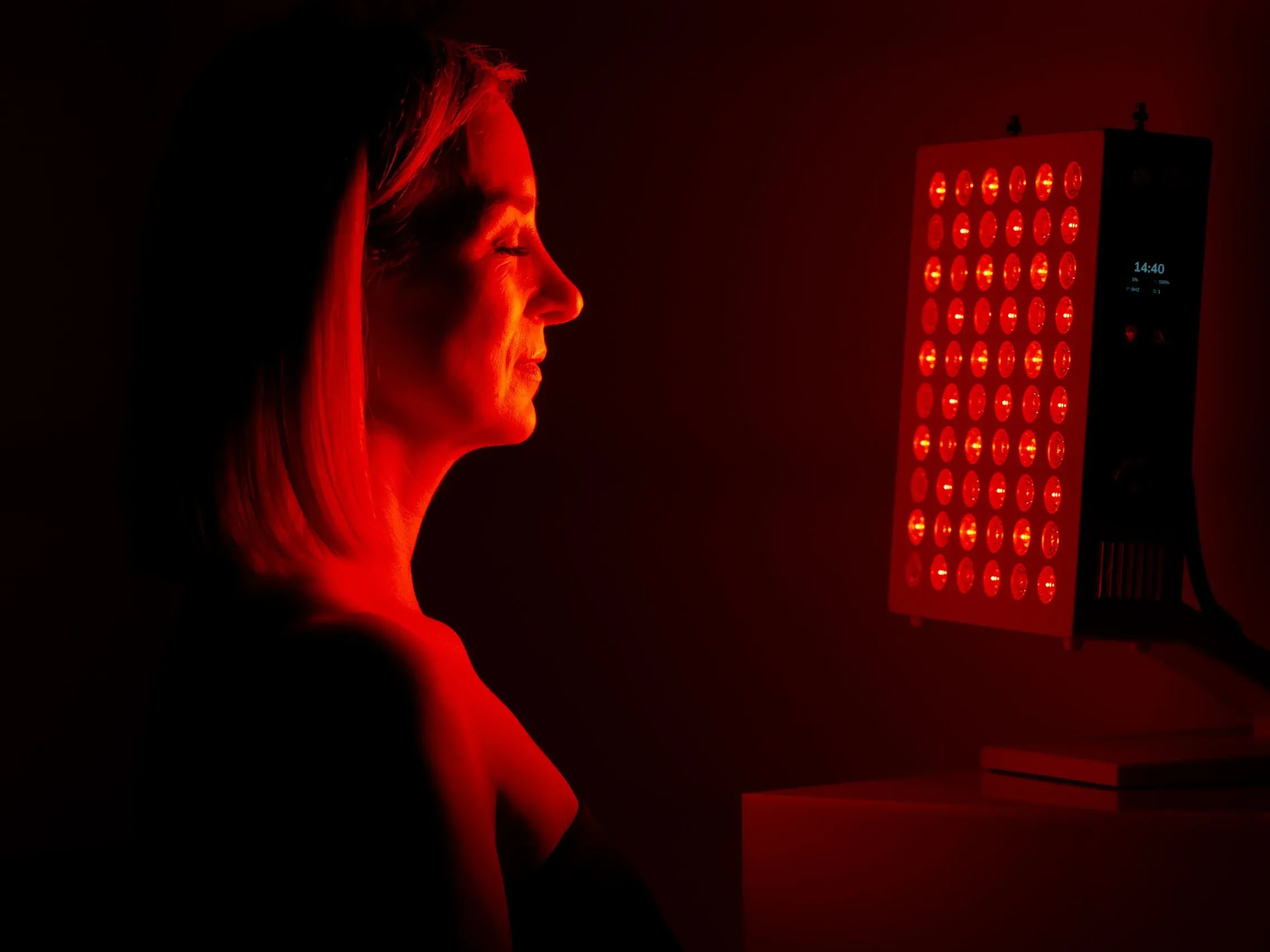
When it comes to transforming the skin, red light therapy has become a recent game changer that can reframe our perception of holistic skin health. But with a plethora of emerging data swirling around the internet hive-mind, it can be challenging to distil the major takeaways. That’s why we’ve drawn up an easy-to-read overview to outline the many health benefits of red light therapy, and how to effectively incorporate it into our skincare routine.
Please note: this blog aims to inform and should not replace professional advice. Always consult with a dermatologist, doctor, or skincare professional before starting any new treatments.
What is Red Light Therapy
What makes red light therapy special?
Red light therapy, using both red and near-infrared (IR) light, is known as photobiomodulation (PBM). This non-invasive treatment has a profound impact on the mitochondria, the powerhouse of our cells responsible for energy production. Clinically, there are proven benefits of red light therapy for inflammation, healing, restoring a youthful skin glow and even mental health.
Can any red light be used for therapy?
No, not every wavelength of red light has been proven to be effective. Research as of 2023 shows us that specific wavelengths within the ‘therapeutic window’ of 600nm-1100nm have demonstrated the highest efficacy, as these wavelengths penetrate the skin whilst stimulating cellular processes that rejuvenate and heal. Furthermore, it is important to understand that only specific wavelengths within this window have verified clinical evidence behind them. These wavelengths currently include: 630nm, 660nm, 810nm, 830nm, and 850nm.
Health Benefits of Red Light Therapy
1) Benefits of red light therapy for skin
Red light therapy has been shown to improve skin health in a variety of ways including:
- Reduced Redness: Skin irritation and inflammation is visibly reduced.
- Improved Barrier Strength: The skin becomes more resilient against irritants.
- Reduced Fine Lines: The skin regains some of its youthful elasticity and firmness.
How Should I Use Skincare with Red Light Therapy?
We advise you apply your active serums and moisturisers after undergoing red light therapy. If you apply these skincare products containing oils beforehand, you run the risk of oil particles reflecting the light and creating a barrier against its penetration. Technically, you can apply a water-based active serum on your skin before red light therapy as the water base will fully absorb prior to the light therapy. Post red light therapy, the enhanced blood flow also ensures active ingredients are more effectively absorbed.
The Ultimate Skincare Duo: Red Light Therapy and Niacinamide
Niacinamide, a form of Vitamin B3, is essential in increasing the health and longevity of cells. It directly impacts skin health by boosting collagen, reducing inflammation, and improving hydration. Niacinamide also boosts NAD+ levels in the skin, which directly influences the health of the mitochondria and overall skin vitality. When paired with red light therapy, the results with niacinamide can be even more transformative.
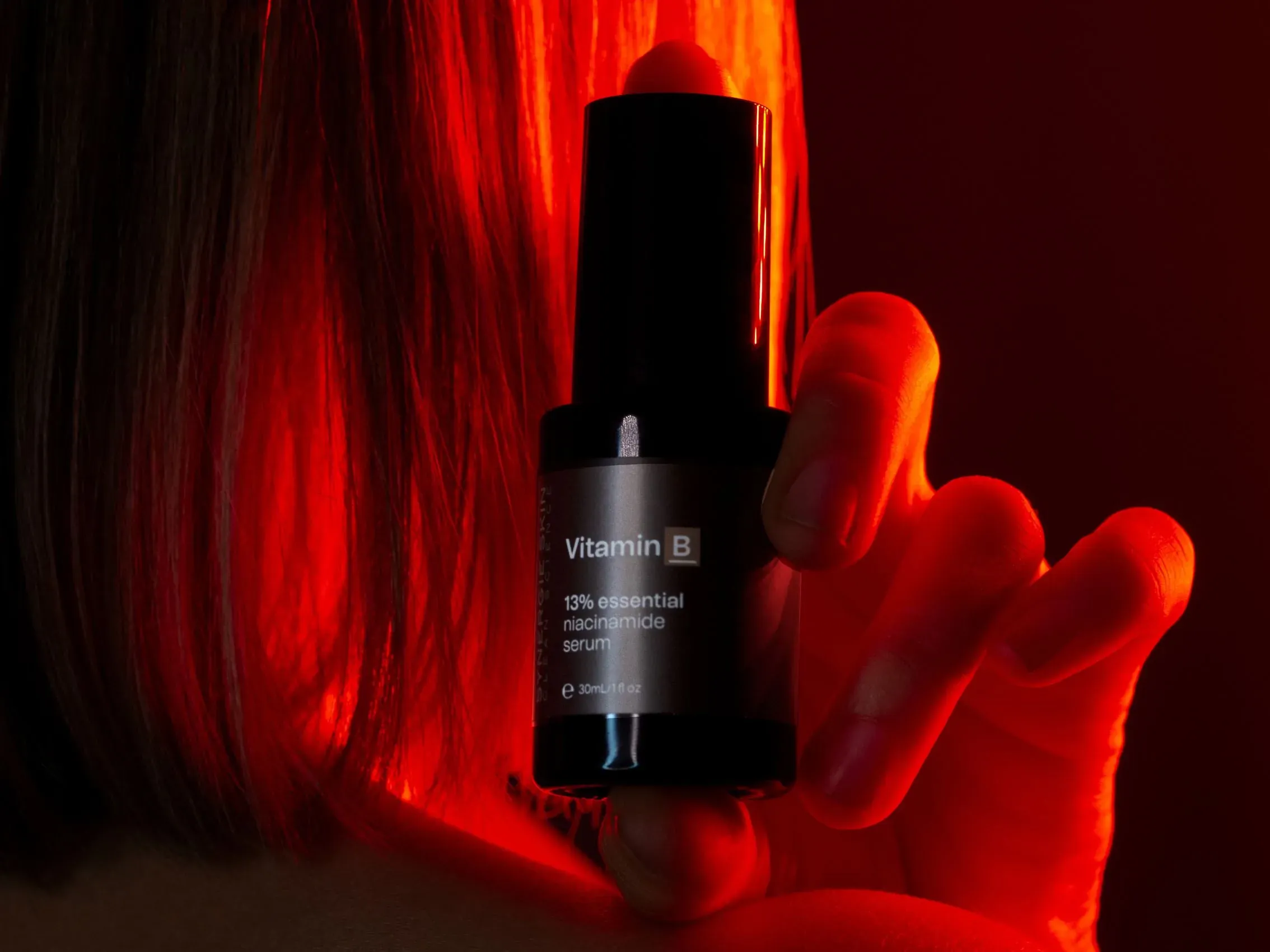
Amplify Your Skincare Results
But niacinamide is not the sole ingredient that pairs beautifully with red light therapy. Products with active vitamin C , retinoids, targeted skin peptides, pre/post biotics, and marine or botanical actives all have amplified effects when used in conjunction with red light therapy, thanks to their combined impact on living skin cells.
A perfect partner for post clinical skin treatments
Whether it be chemical peels, laser, IPL, heat inducing treatments, or other fractional devices; if your skin has experienced clinically controlled injury for overall rejuvenation, red light therapy can accelerate the healing time and optimise the outcome. Many reputable skin clinics offer medical grade red light therapy to aid in patient recovery and outcomes.
2) Boosting Brain Health and Mental Well-being with Red Light Therapy
Interestingly, the benefits of red light therapy extend beyond just skin health. The brain, arguably our most vital organ, can also gain advantages from this innovative treatment. When near-infrared light (808-820nm wavelength) penetrates the skull (in conjunction with systemic effects) it can stimulate mitochondrial activity in the brain. This heightened activity leads to naturally increased blood flow, which aids in cognitive function and neural repair. Several studies have shown potential improvements in memory, attention span, and even mood. Near infrared (NIR) light therapy has even shown promise as a complementary treatment for conditions like depression, anxiety, and traumatic brain injury. The benefits of red light therapy for mental health are highlighted by enhanced cerebral blood flow, which can facilitate better neural communication, thus potentially helping combat the symptoms of these conditions. As mental well-being is intricately connected to overall health, integrating NIR light therapy could be a holistic approach to wellness, encompassing both physical and mental spheres.
Note: Whilst there are preliminary studies suggesting these benefits, it is important to understand that this particular field of mental health in relation to NIR is still being researched, and the clinical evidence isn't as robust or established as some other areas of red light therapy.
Are all Red Light Therapy's the same?
No, and this is crucial. The therapeutic effects of Red Light Therapy (Visible Spectrum) and Near-Infrared Light (NIR) are significantly influenced by the specific wavelengths employed.
1) Red Light (Visible Spectrum):
630nm: This wavelength is often referred to as the "healing light." It penetrates the skin superficially and is believed to aid in skin rejuvenation, wound healing, and reducing inflammation. This makes it popular in skincare treatments, especially for addressing issues like acne scars, rosacea, and sun damage.
660nm: Slightly deeper penetration than the 630nm, the 660nm wavelength is often used to promote wound healing, tissue repair, and muscle recovery. It can stimulate the production of collagen and elastin, both crucial for maintaining the skin's elasticity and youthful appearance. This wavelength pairs best with active skincare ingredients such as niacinamide, retinoids, and vitamin C.
2) Near-Infrared Light (NIR):
810nm: This wavelength penetrates deeper than the red light, reaching the muscles, lymph pathways, and even the joints and bones. It's often used to address muscle and joint pain, promoting faster recovery from injuries. NIR therapy is often used to address osteoarthritis: a degenerative disease of the joints. Some studies also suggest potential benefits in addressing neurodegenerative conditions due to its ability to stimulate mitochondrial activity in nerve cells.
830nm: Going even deeper, the 830nm wavelength is primarily known for its anti-inflammatory properties. This makes it ideal for treating deep tissue issues, reducing muscle soreness, and aiding in the recovery of sports injuries, highlighting the benefits of red light therapy for pain.
850nm: This is one of the most deeply penetrating wavelengths, reaching vital organs and providing systemic benefits. It's widely used for its anti-inflammatory effects, promoting better circulation, and aiding in tissue regeneration. Moreover, due to its deep penetration capabilities, it has been explored for potential benefits in brain health, addressing conditions like traumatic brain injuries and improving cognitive function.

Bringing Red Light Therapy Home?
Considering red light therapy at home? You absolutely can, but it's essential to make informed choices. Generally speaking, consumer products typically utilise 50% red (equally split between 630nm and 660nm) and 50% NIR (equally split between 810nm, 830nm, and 850nm). Of course, there are a range of products on the market with new technology innovations emerging over time.
How Do I Choose a Red Light Therapy Device?
Red Light Therapy Australia
For those in Australia, selecting the best red light therapy device means researching trusted brands. Look for devices that have wavelengths within the optimal therapeutic range. A good red light therapy panel or a full body red light therapy device should also come with safety certifications and clear usage guidelines. In the past, Synergie Skin has collaborated with ROJO Red Light Therapy as a trusted Australian brand.
Should I Have My Eyes Open or Closed When Using a Red Light Therapy Device?
When undergoing therapy, if the light is directly facing your eyes, it's safer to keep them closed, especially if pulsing is involved, to reduce risks like fatigue or potential strain. Whilst retinal damage from red light therapy is uncommon, this is also a factor to be cautious of.
Pulsing in Red Light Therapy: Yay or Nay?
Pulsing in red light therapy is a hot topic. While some believe it doesn't enhance therapeutic benefits, it is known that pulsing allows for higher power densities. This can lead to deeper penetration as tissues are less prone to overheating. However, the specific benefits and comparisons between pulsing and continuous red light therapy may need more research to be definitively stated. The majority of home devices utilise continuous, steady LED light, which is still effective and more accessible for the average user.
Final Thoughts On Red Light Therapy
Incorporating red light therapy into your skincare routine, especially in conjunction with powerhouse skincare ingredients like niacinamide, can have transformative benefits for your skin and overall wellness. Whether you're seeking the benefits of red light therapy for skin, pain, general wellness, recovery or even mental health, ensuring you're using the correct devices and products alongside professional advice will set you on a path to optimal health, inside and out.
I personally incorporate red light therapy into my daily routine and have experienced significant benefits to the health of my skin and my general sense of wellbeing.
To learn more about red light therapy, visit ROJO Red Light Therapy
To purchase Synergie Skin's Vitamin B Serum, click HERE
References:
Bart. (n.d.). Red Light Therapy Pulsing: Worthless Or Useful? A Science Breakdown. Alexfergus. https://www.alexfergus.com/blog/red-light-therapy-pulsing
Johnstone DM, Hamilton C, Gordon LC, Moro C, Torres N, Nicklason F, Stone J, Benabid AL, Mitrofanis J. Exploring the Use of Intracranial and Extracranial (Remote) Photobiomodulation Devices in Parkinson's Disease: A Comparison of Direct and Indirect Systemic Stimulations. J Alzheimers Dis. 2021;83(4):1399-1413. doi: 10.3233/JAD-210052. PMID: 33843683.
Zimmerman, S. and Reiter, R. 2019. Melatonin and the Optics of the Human Body. Melatonin Research. 2, 1 (Feb. 2019), 138-160. DOI:https://doi.org/https://doi.org/10.32794/mr11250016.
Lee SY, Park KH, Choi JW, Kwon JK, Lee DR, Shin MS, Lee JS, You CE, Park MY. A prospective, randomized, placebo-controlled, double-blinded, and split-face clinical study on LED phototherapy for skin rejuvenation: clinical, profilometric, histologic, ultrastructural, and biochemical evaluations and comparison of three different treatment settings. J Photochem Photobiol B. 2007 Jul 27;88(1):51-67. doi: 10.1016/j.jphotobiol.2007.04.008. Epub 2007 May 1. PMID: 17566756.
Mario A. Trelles & Inés Allones (2006) Red light‐emitting diode (LED) therapy accelerates wound healing post‐blepharoplasty and periocular laser ablative resurfacing, Journal of Cosmetic and Laser Therapy, 8:1, 39-42, DOI: 10.1080/14764170600607731
Gordon LC, Martin KL, Torres N, Benabid AL, Mitrofanis J, Stone J, Moro C, Johnstone DM. Remote photobiomodulation targeted at the abdomen or legs provides effective neuroprotection against parkinsonian MPTP insult. Eur J Neurosci. 2023 Mar 22. doi: 10.1111/ejn.15973. Epub ahead of print. PMID: 36949610.
Tuby H, Maltz L, Oron U. Induction of autologous mesenchymal stem cells in the bone marrow by low-level laser therapy has profound beneficial effects on the infarcted rat heart. Lasers Surg Med. 2011 Jul;43(5):401-9. doi: 10.1002/lsm.21063. PMID: 21674545.
Liebert, Ann et al. “"Photobiomics": Can Light, Including Photobiomodulation, Alter the Microbiome?.” Photobiomodulation, photomedicine, and laser surgery vol. 37,11 (2019): 681-693. doi:10.1089/photob.2019.4628
Mitchell UH, Mack GL. Low-level laser treatment with near-infrared light increases venous nitric oxide levels acutely: a single-blind, randomized clinical trial of efficacy. Am J Phys Med Rehabil. 2013 Feb;92(2):151-6. doi: 10.1097/PHM.0b013e318269d70a. PMID: 23334615.
Baxter, G David et al. “Low level laser therapy (Photobiomodulation therapy) for breast cancer-related lymphedema: a systematic review.” BMC cancer vol. 17,1 833. 7 Dec. 2017, doi:10.1186/s12885-017-3852-x
Gordon LC, Martin KL, Torres N, Benabid AL, Mitrofanis J, Stone J, Moro C, Johnstone DM. Remote photobiomodulation targeted at the abdomen or legs provides effective neuroprotection against parkinsonian MPTP insult. Eur J Neurosci. 2023 Mar 22. doi: 10.1111/ejn.15973. Epub ahead of print. PMID: 36949610.



